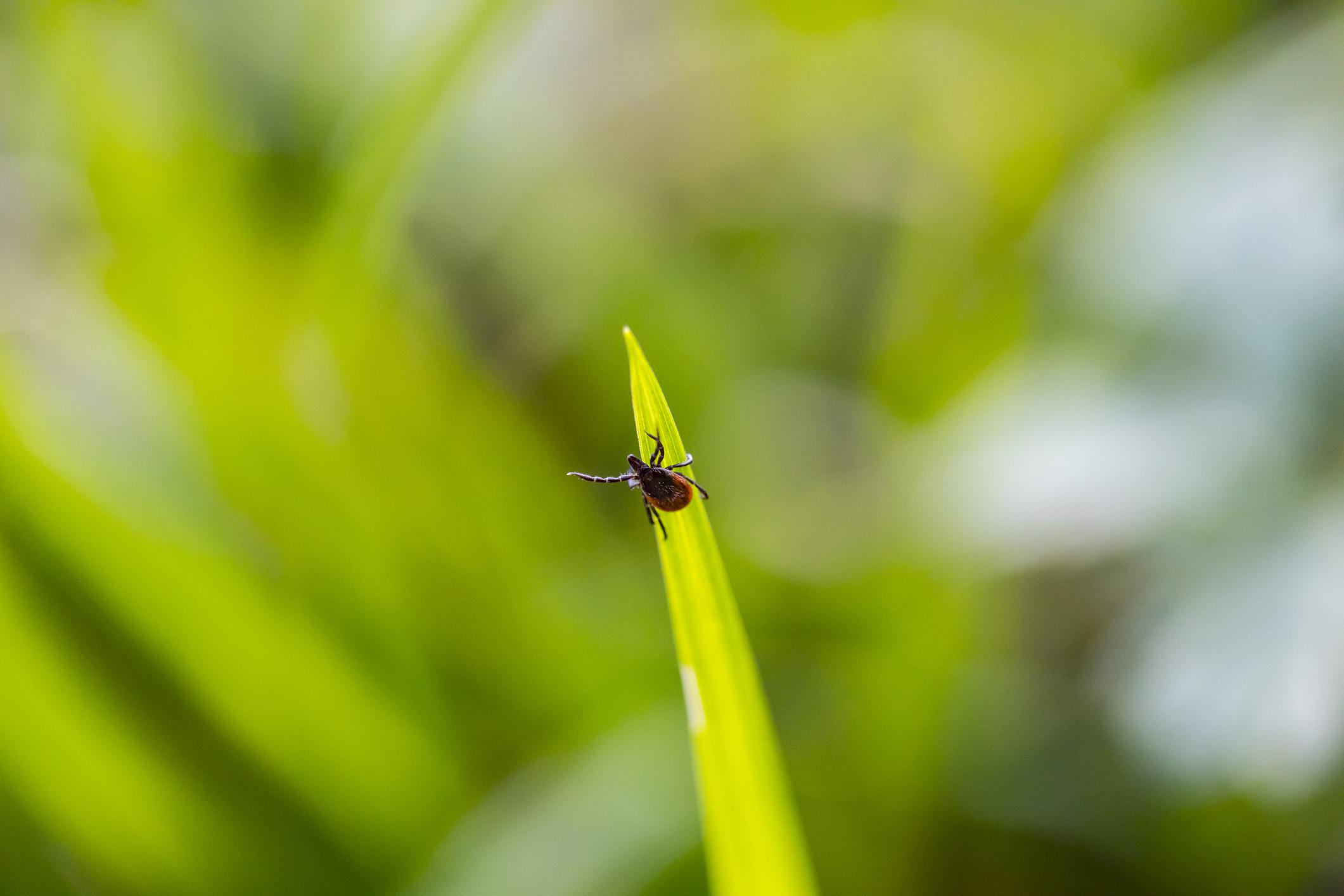How to Understand the Truth About Whether Ticks Can Fly
Posted by Mosquito Squad
February 19, 2025

Author: Emma Grace Crumbley, Entomologist
When it comes to ticks, there’s no mystery - they’re stealthy pests that are difficult to spot and can spread dangerous diseases to people, pets, and livestock. However, when it comes to where ticks come from, many people have misconceptions. Growing up, I often heard that ticks fall from trees in search of their hosts. I even once heard that they could "fly" by gliding on the wind. The truth is, ticks aren’t magical, and they certainly aren’t aerodynamic.
So Can Ticks Fly?
No! Ticks are not able to fly. Not convinced? Let’s examine a tick’s body a little more closely.
Ticks are arthropods more closely related to spiders than insects. They have two body parts and six to eight legs, depending on their life stage. Though their bodies are built to attach and cement themselves to hosts, with specialized mouthparts called hypostomes that allow ticks to latch onto hosts when feeding, ticks lack one key body part that would help them fly: wings.
Not only do ticks not have wings, but they don’t even have wing pads*. These pests never could and never will be able to fly.
Do Ticks Fall Out of Trees?
Nope! Ticks do not fall down from trees. At least, they don't do that on purpose to find a blood meal.
The idea that ticks fall out of trees may come from their affinity for climbing high grasses and foliage to better grasp their hosts, a behavior known as questing. Since ticks can't flap their nonexistent wings to pick themselves up off the ground, these strictly terrestrial insects must seek higher ground to have the best chance of finding a nearby host. However, if a tick climbs too high, it may lose its balance and fall back onto the ground.
Myths like this one usually come from people with first-hand experience finding a tick on their head, behind their ear, or near their collar line – places high up on the body that "only a tick falling from a tree could find." However, it's important to remember that ticks are excellent climbers. For example, a tick that gets on your pants would have no problem climbing along your clothes until it finds a patch of exposed skin to bite. And as ticks are small, lightweight pests, you may not even feel the tick as it moves.
What About Gliding Through the Air?
By now, I bet you are convinced that ticks are not an airborne species. Yet despite their lack of wings and inability to fall on command out of trees, there is surprisingly some evidence that ticks can glide through the air intentionally when finding hosts. A 2023 study suggests that static electricity passively attracts ticks to hosts.
“Our results show that electrostatically charged hosts passing within a few millimeters of a tick, but without making direct contact, can generate electric conditions that enhance the capacity of ticks to successfully bridge the gap and establish contact.”
When an animal develops a static charge from friction, like rubbing its fur together on its limbs and tail, it creates an electric field around itself that pulls ticks to the animal through electrostatic attraction. Just like the science experiment where you rub a balloon against your hair to make your hair stand on end**, the rubbing of fur together produces static electricity that can lift ticks up from millimeters away without the host having to brush up against the tick.
This research reveals a fascinating new explanation for how ticks attach to animal hosts, opening up research for new preventative measures and reasoning behind tickborne illnesses in animal populations.
Don’t Let a Tick Problem Fly Over Your Head
Take back your yard today with Mosquito Squad Plus’ tick control. Our highly trained technicians are adept at inspecting your yard for problem areas, identifying tick hot spots, and creating a treatment plan to help protect your yard from pests. Find your local Squad today and call for a free quote! Services vary by location.
--------------------------------------------
*Some insects that cannot fly still have wing pads attached to their body. These pads are usually smaller than wings would be and are either leathery or rigid. They serve as an evolutionary remnant of either a time when these insects could fly eons ago or a phylogenic split from their nearest common ancestor that had wings. Bed bugs are an example of flightless insects with wing pads.
**In the balloon experiment, rubbing a balloon against your hair transfers electrons, negatively charged particles, from your hair to the balloon through friction. This makes the balloon more negatively charged and your hair more positively charged, causing your hair to become attracted to the balloon and stand up when you bring the balloon back by it. In the case of animal fur, the fur rubbing against itself creates a similar static field through friction. Ticks themselves are small and neutrally charged, so when a larger animal generates either a positive or negative field, the tick will be pulled toward the animal.
